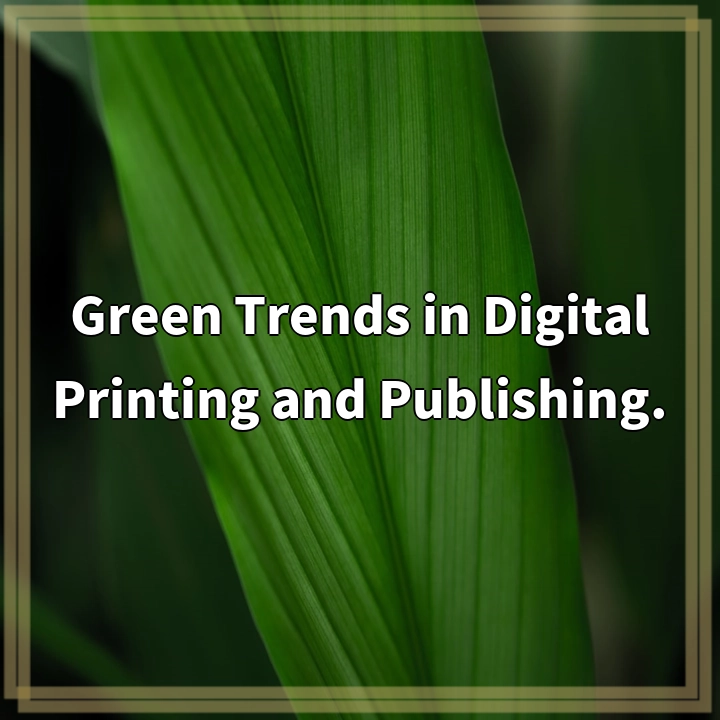
What it is
Digital printing and publishing refer to the process of creating and distributing content, such as books, magazines, brochures, and marketing materials, using digital technology. This method has gained popularity in recent years due to its convenience, cost-effectiveness, and ability to produce high-quality results. However, there are certain environmental concerns associated with digital printing and publishing that need to be addressed.
Real-world problems
1. Waste generation: One of the significant concerns with digital printing and publishing is the amount of waste generated. Traditional printing methods often involve large print runs, leading to surplus copies that can end up as waste. Additionally, outdated or unused digital devices, such as printers and cartridges, contribute to electronic waste.
2. Energy consumption: Digital printing and publishing rely heavily on electricity, requiring energy-intensive machines and equipment. The high energy demand contributes to carbon emissions and places a burden on the grid’s resources.
3. Chemical usage: The production of inks and toners used in digital printing involves the use of chemicals, such as volatile organic compounds (VOCs), which can be harmful to human health and the environment. Improper disposal of these chemicals can lead to water and soil pollution.
4. Paper consumption: Although digital publishing reduces the need for physical copies, digital printers still require paper for printing drafts or proofs. Furthermore, digital publications can often be printed by readers, contributing to paper waste.
5. Lifecycle impact of devices: The production, use, and eventual disposal of digital devices have environmental consequences. Extraction of raw materials, manufacturing processes, and electronic waste management all have significant impacts on ecosystems and human health.
Addressing these real-world problems is crucial to make digital printing and publishing more environmentally sustainable. Implementing greener practices can help mitigate these issues and create a more sustainable industry.

Solutions for Green Trends in Digital Printing and Publishing
Implementing sustainable practices in digital printing and publishing can help address the environmental concerns associated with the industry. Here are some solutions that can contribute to a greener and more sustainable approach:
1. Reduce waste generation
– Opt for on-demand printing to minimize the production of surplus copies.
– Practice proper recycling and disposal methods for digital devices and components.
– Encourage the reuse and repurposing of printed materials whenever possible.
2. Improve energy efficiency
– Invest in energy-efficient equipment and technologies for digital printing.
– Optimize printing processes to reduce energy consumption and idle time.
– Incorporate renewable energy sources to power printing infrastructure.
3. Promote eco-friendly ink and toner options
– Choose inks and toners with low VOC content and environmentally friendly formulations.
– Embrace recycling programs for used cartridges and responsibly dispose of hazardous chemicals.
– Encourage the use of soy or vegetable-based inks, which have lower environmental impact.
4. Embrace digital alternatives
– Advocate for the adoption of digital alternatives, such as e-books and online publications.
– Encourage readers to choose digital formats over printing hard copies.
– Utilize digital tools for collaboration, editing, and proofreading to minimize paper usage.
5. Responsible device lifecycle management
– Promote the use of eco-friendly materials and manufacturing processes for digital devices.
– Support electronics recycling programs and encourage consumers to recycle their devices properly.
– Extend the lifespan of digital devices through upgrades and repairs rather than frequent replacements.
By embracing these solutions, the digital printing and publishing industry can make positive strides towards reducing its environmental impact and moving towards a more sustainable future.















